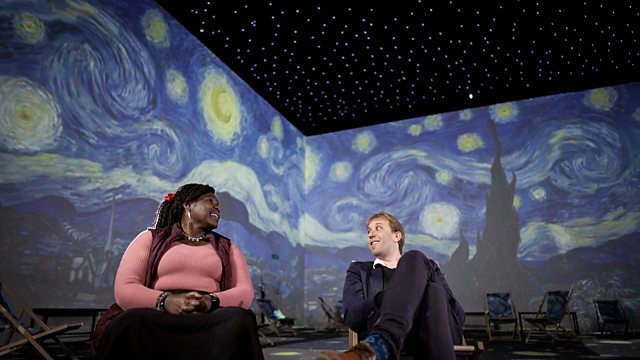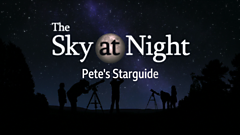
Dark Skies
The Sky at Night team explore how light pollution impacts the beauty of the night sky, animal behaviour and human health, and what might be done to mitigate its harmful effects.
Dr Maggie Aderin-Pocock and Professor Chris Lintott visit the Van Gogh Immersive Experience to seek inspiration in one of the world’s most famous works of art, Starry Night. How can we mitigate the effects of light pollution so that the beauty of the night sky captured by Van Gogh might be preserved in the real world for future generations?
Images and data from satellites have made it easy for us to visualise the extent of the growing effects of light pollution around the world, but speaking with Professor Kevin Gaston from the University of Exeter, Chris discovers that our current estimates show that global light pollution could be much worse than past data suggests. Without satellites capable of analysing the light emitted from the now-popular bluer LED lighting, he estimates that the true levels of light pollution could be around 200% more than was previously thought. Kevin and Chris discuss how light pollution is not just a problem for astronomers but can have devastating effects on animal behaviour and human health.
Pete Lawrence visits one of the few places in the UK where you might still be able to catch a glimpse of the Milky Way. In Moore’s Reserve, named after Sir Patrick Moore, Pete meets up with Dark Skies Officer and South Down National Park ranger Dan Oakley, whose public outreach and passion for astronomy helped to get Dark Sky Reserve status for the area. Together they talk about the way towns and cities might change to help create more dark sky areas for the public to enjoy.
In contrast, atop Television Centre in London - one of the country’s brightest cities – Chris joins the Baker Street Irregular Astronomers under a bright city night sky. The group demonstrate some tips and tricks to show us that, no matter where you are, you can still view and image some spectacular night sky objects.
And finally, Maggie looks at the latest risk to clear views of the night sky, mega-constellations and how satellite streaks that were once a novelty and easy to avoid are now becoming a nuisance to researchers and astronomers in many disciplines. Speaking to Tim Stevenson from the Square Kilometre Array Observatory, they discuss how mega-constellations disrupt radio telescopes that rely on a particular waveband to help their research of everything from galaxy formations and the chemical markers of life in the universe.
Last on
More episodes
Previous
Clip
-
![]()
Starguide: January 2022
Duration: 04:03
Music Played
Timings (where shown) are from the start of the programme in hours and minutes
-
![]() 00:01
00:01Royal Philharmonic Orchestra, Thomas Beecham
At The Castle Gate From Pelleas and Melisande (The Sky At Night) (1955)
Credits
| Role | Contributor |
|---|---|
| Presenter | Chris Lintott |
| Presenter | Maggie Aderin-Pocock |
| Presenter | Pete Lawrence |
| Production Coordinator | Carisse Perks |
| Production Manager | Emma Hyland |
| Executive Producer | Steve Crabtree |
| Series Producer | Peter Leonard |
| Producer | Raquel Taylor |
Broadcasts
- Sun 9 Jan 2022 22:00
- Thu 13 Jan 2022 00:00
Featured in...
![]()
30 under 30
30 programmes under 30 minutes to watch when you're short on time!
Join our photo group
Share images, inspiration and tips with fellow photographers



